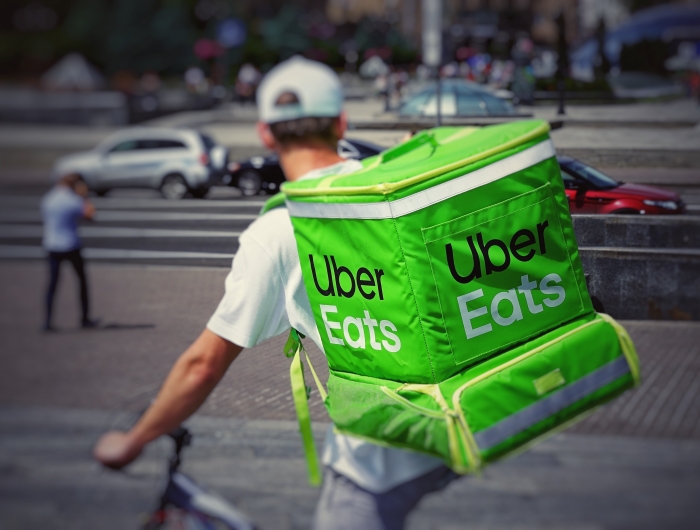Calories often absent on third-party food delivery platforms

Robert Anasch - unsplash.com.
Researchers say clarity needed on current labeling law and regulations for restaurant menus shared on widely used ordering apps
Restaurants posting their menus on DoorDash, Uber Eats, and Grubhub are not consistently following a law requiring calorie disclosures, according to new research published today in the journal Public Health Nutrition. Authors of the study say that the Food and Drug Administration should clarify the rules so that calories are posted more consistently.

A federal law passed in 2010 requires chain restaurants to post calorie counts on menus, and those calorie counts must be visible to consumers while making their food selections, whether online or in a restaurant. Researchers at the Center for Science in the Public Interest, Tufts University, and New York University examined whether the top 75 restaurant chains are supplying the information by analyzing the first three foods and first three drinks on restaurants’ menus on the restaurants’ own websites or apps and on the third-party platforms DoorDash, Uber Eats, and Grubhub.
Examining food and drink items posted by restaurants located in four U.S. cities, the researchers found that just 60 percent of menus on restaurant websites or apps posted calories for every menu item reviewed (43 of 72 chains). And the proportion of menus with calorie counts on third-party platforms was even lower. Only 27 percent of menus on DoorDash (15 of 55 chains listing their menus there) and 19 percent of menus on Uber Eats (11 of 59 chains) had consistent calorie information. Just six percent of menus on Grubhub had consistent calorie information (3 of 49).
Four of the chains—McDonald’s, Panera Bread, Whataburger, and Jamba—had calories posted for every item reviewed by the researchers on all online platforms. But the researchers did not find any calorie information posted at the point of selection on any of the online menus from four other chains—Domino’s Pizza, Papa Murphy’s, Church’s Chicken, and A&W Restaurants.
FDA paused its enforcement of menu labeling requirements in April of 2020 at the height of the COVID-19 public health emergency but has promised to resume enforcement in November of 2023. This means restaurants that aren’t following the rules may soon find themselves subject to penalties.
A spokesperson for FDA previously told the Washington Post that third party platforms themselves aren’t covered by federal menu labeling laws. But the researchers found that restaurant chains generally have the ability to add calorie information when posting menus on DoorDash, Grubhub, and Uber Eats, which boosts the case for FDA to hold the restaurants accountable for following federal rules when posting on third party platforms. The researchers called on the agency to clarify whether the chain restaurants can be held accountable for menus they post to the platforms.
“Restaurants can provide calorie information online, but we found that some are choosing not to,” says study author Eva Greenthal, Senior Policy Scientist at Center for Science in the Public Interest. “As more and more restaurant ordering happens online, responsible companies will make sure that their customers have all the information they need to make informed choices no matter where they order.”

“While ordering from third-party apps wasn’t nearly as popular when menu labeling was first established under the Affordable Care Act, both FDA’s regulation and industry practice should reflect the reality of how people are ordering their food today,” said Sean Cash, an economist at the Friedman School of Nutrition Science and Policy at Tufts University and senior author on the study. “Consistent access to calorie labeling helps consumers make informed choices—and this should available regardless of where the menu is posted.”
Additional study authors are Sarah Sorscher at CSPI and Jennifer L. Pomeranz at the School of Global Public Health at New York University.
This research received no specific grant from any funding agency, company, or non-profit organization.
# # #
Tags
Topics
Brands
Contact Info: Lisa Flores, 202-777-8368 or Jeff Cronin, 202-777-8370

